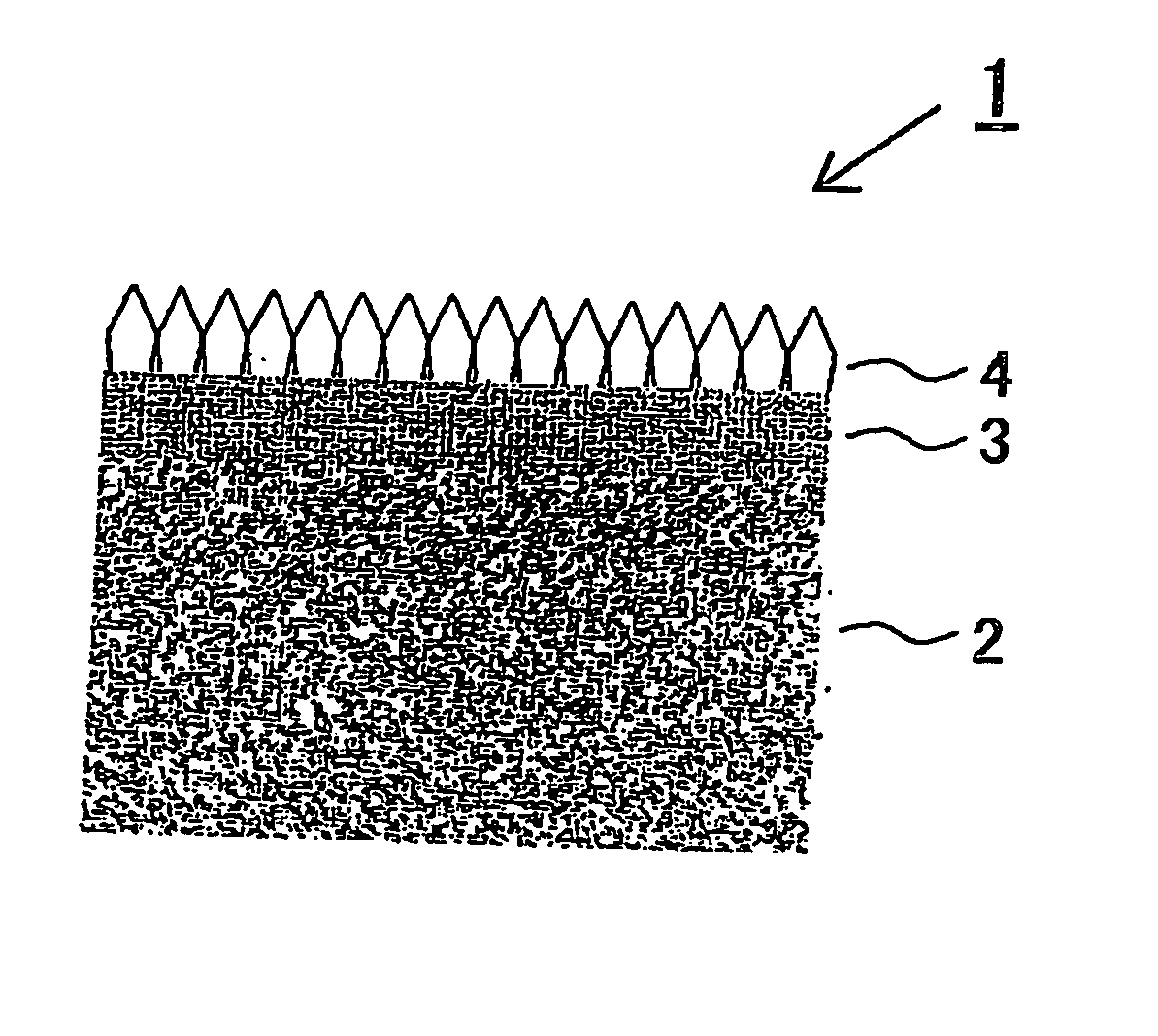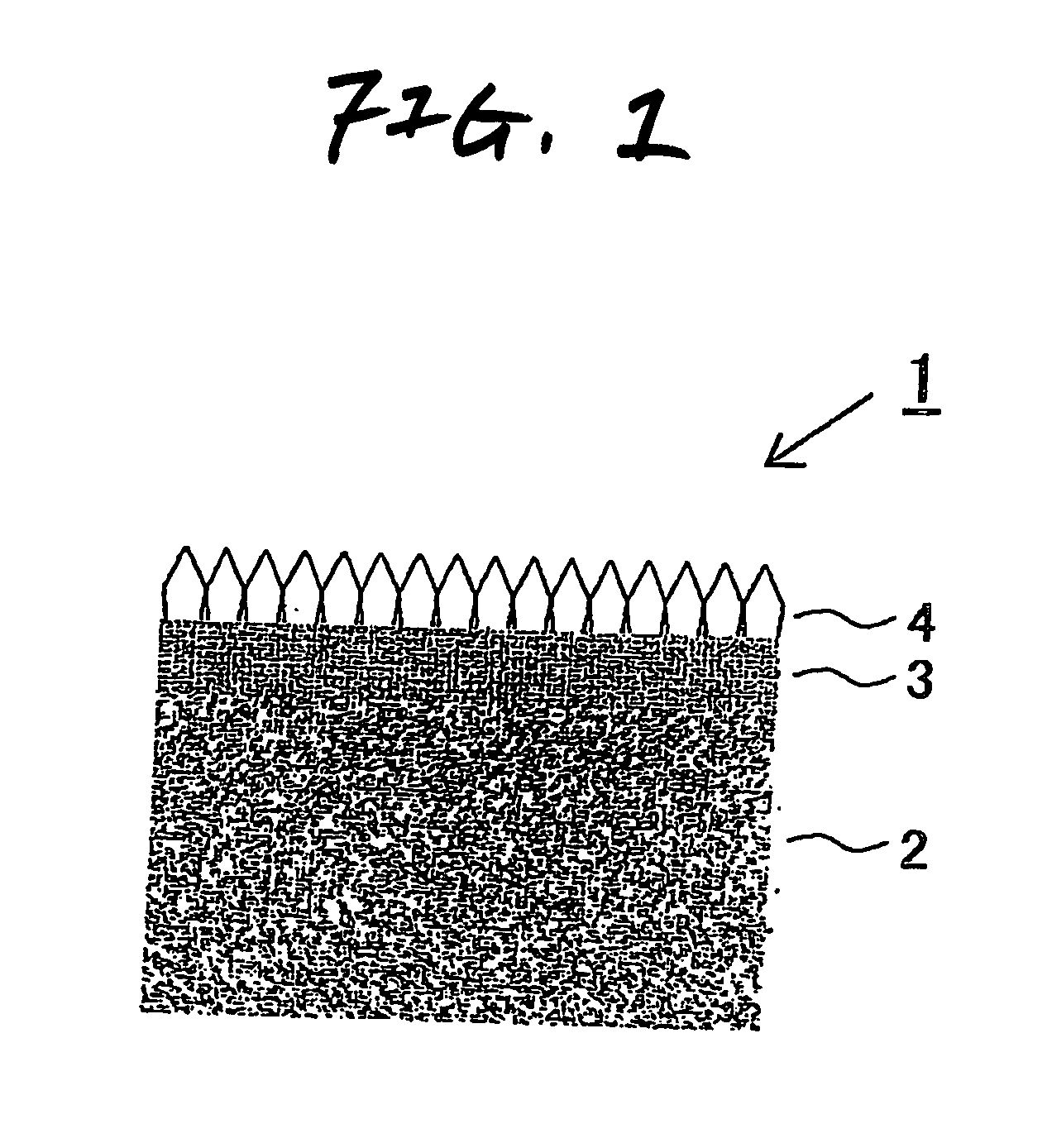Conductive diamond electrode and process for producing the same
a diamond electrode and diamond technology, applied in the direction of electrodes, electrical-based machining electrodes, electrode coatings, etc., can solve the problems of insufficient reaction time, high consumption, and inability to readily oxidize coexisting substances, so as to improve substrate stability, reduce cost, and improve the effect of substrate stability
- Summary
- Abstract
- Description
- Claims
- Application Information
AI Technical Summary
Benefits of technology
Problems solved by technology
Method used
Image
Examples
example 1
[0074] A titanium plate was blasted using an iron grit, acid-washed with 20% boiling hydrochloric acid, and then rinsed with pure water to obtain a conductive substrate.
[0075] This substrate was set in a CVD apparatus. In a hydrogen stream, tantalum chloride (TaCl5) was vaporized at 300° C. and a tantalum layer was deposited in a thickness of 8 μm on the titanium substrate held at 1,000° C. As a post-treatment, a hydrogen elimination treatment was conducted in which the substrate was held at 700° C. in a vacuum of 10−3 Pa.
[0076] The substrate was taken out. The surface of this substrate was subjected to a marring / seeding treatment with an abrasive material comprising fine diamond particles. Thereafter, the substrate was set again in the CVD apparatus. In a hydrogen stream, methane (CH4) as a carbon source and trimethylboron ((CH3)3B) as a boron B source were added. A current was permitted to flow through the filament to heat the atmosphere to a temperature of 2,000-2,300° C., i.e....
example 2
[0079] A titanium substrate obtained through the same treatments as in Example 1 was set in a high-frequency sputtering apparatus. A tantalum plate was used as a target, and a discharge was continued by supplying a power for 90 minutes in an argon atmosphere of 10−0 Pa. Thus, a tantalum layer was deposited in a thickness of 10 μm on the substrate.
[0080] Subsequently, a conductive diamond layer was formed on the substrate in the same manner as in Example 1.
[0081] The same electrolysis test as in Example 1 was conducted. As a result, a stable cell voltage was maintained for 4,500 hours. The diamond electrode was ascertained to be usable over long periods.
example 3
[0082] Sputtering was conducted under the same conditions as in Example 2, except that a niobium plate was used as a target. Thus, a niobium layer was deposited in a thickness of 10 μm on the titanium substrate. Furthermore, a conductive diamond layer was formed on the substrate in the same manner as in Example 1.
[0083] The same electrolysis test as in Example 1 was conducted. As a result, a stable cell voltage was maintained for 3,800 hours. The diamond electrode was ascertained to be usable over long periods.
PUM
| Property | Measurement | Unit |
|---|---|---|
| diameter | aaaaa | aaaaa |
| specific gravities | aaaaa | aaaaa |
| specific gravities | aaaaa | aaaaa |
Abstract
Description
Claims
Application Information
 Login to View More
Login to View More - R&D
- Intellectual Property
- Life Sciences
- Materials
- Tech Scout
- Unparalleled Data Quality
- Higher Quality Content
- 60% Fewer Hallucinations
Browse by: Latest US Patents, China's latest patents, Technical Efficacy Thesaurus, Application Domain, Technology Topic, Popular Technical Reports.
© 2025 PatSnap. All rights reserved.Legal|Privacy policy|Modern Slavery Act Transparency Statement|Sitemap|About US| Contact US: help@patsnap.com


